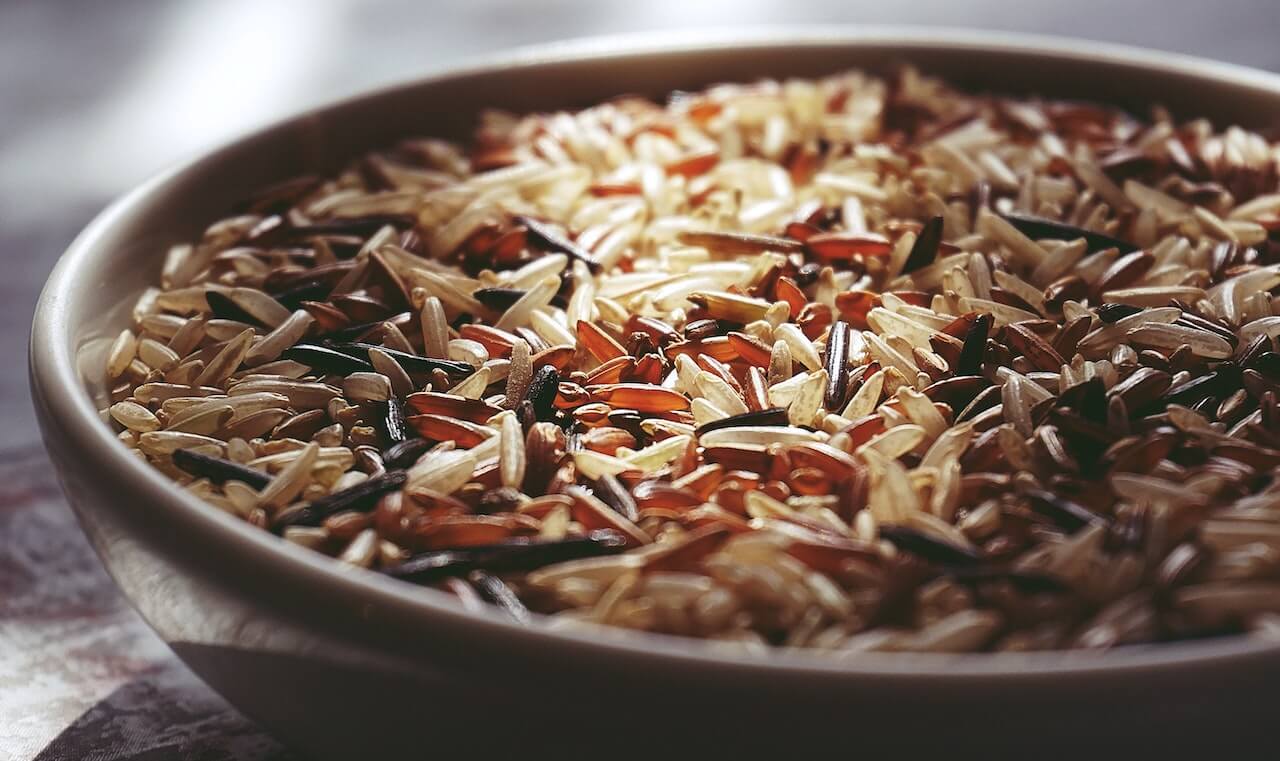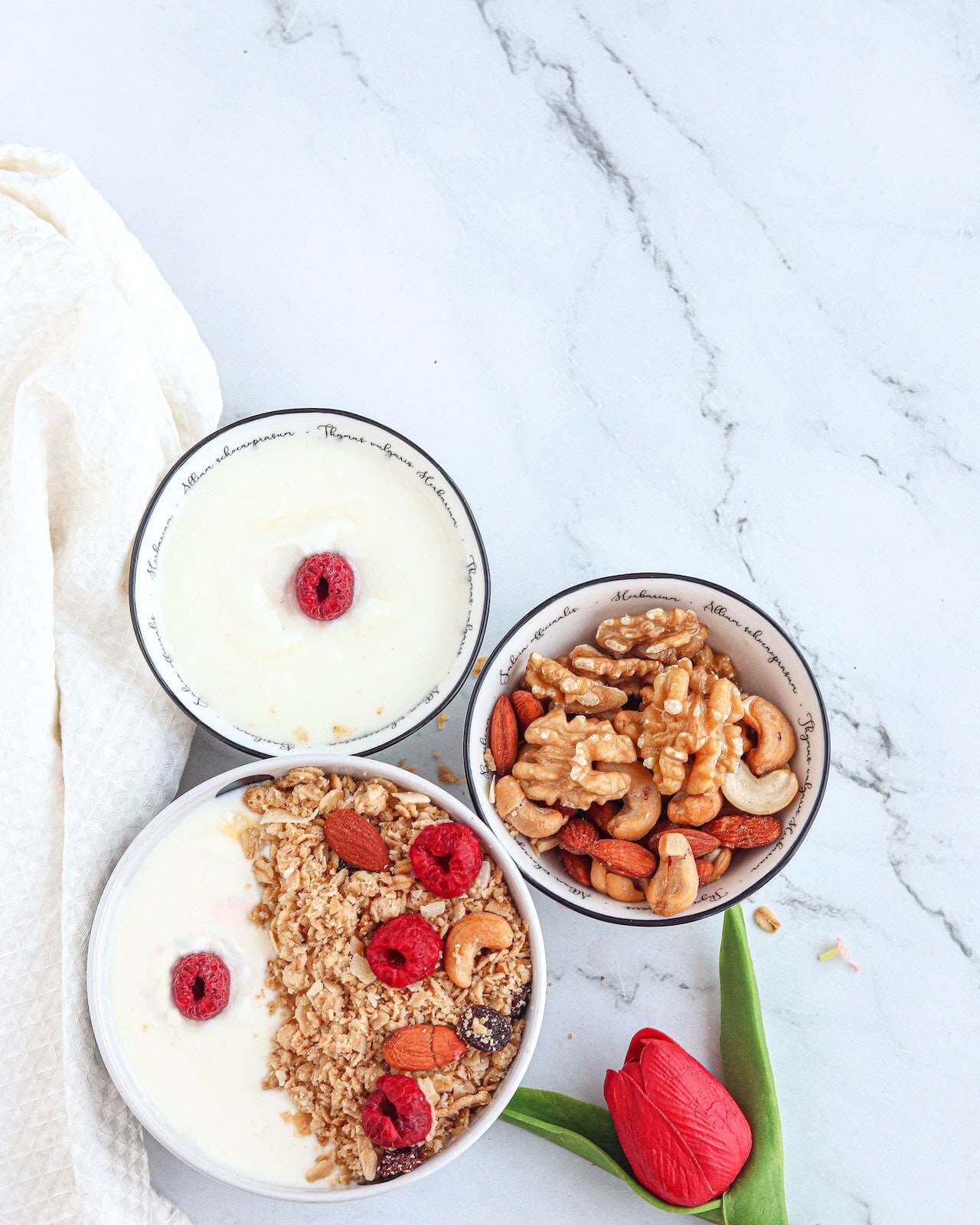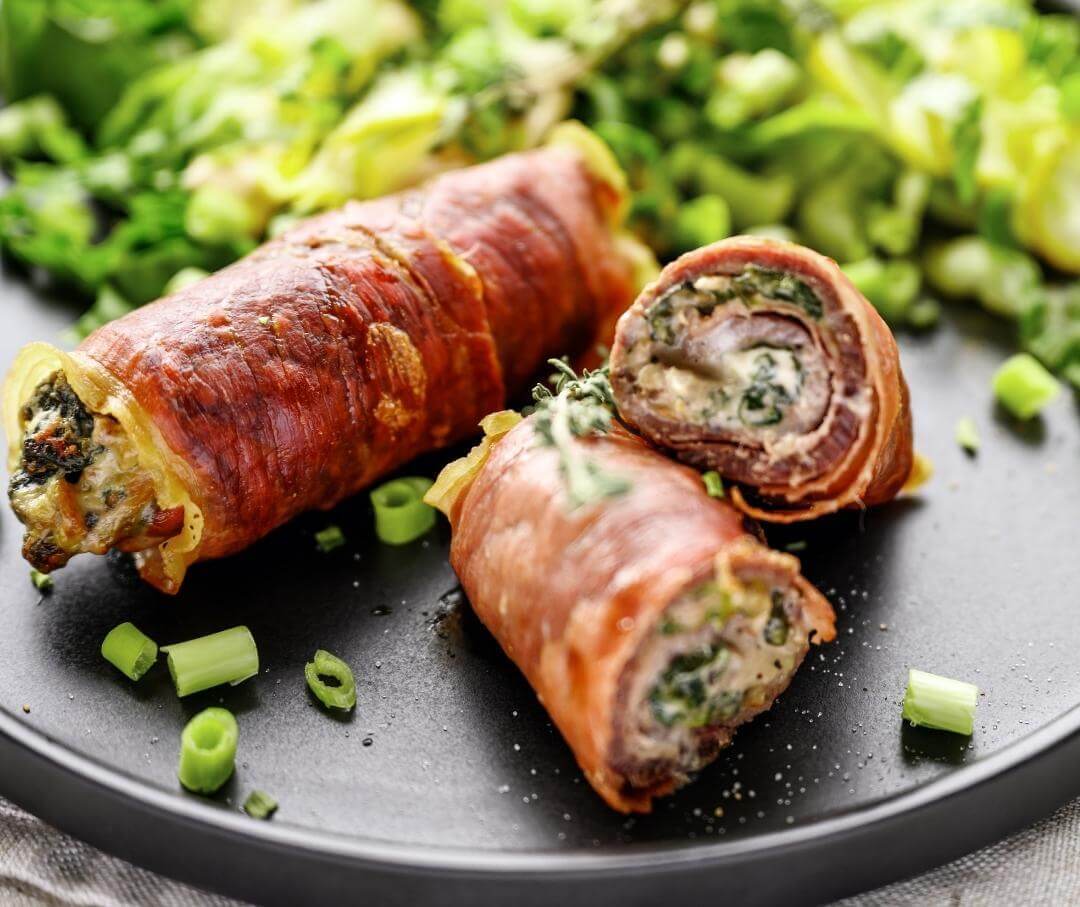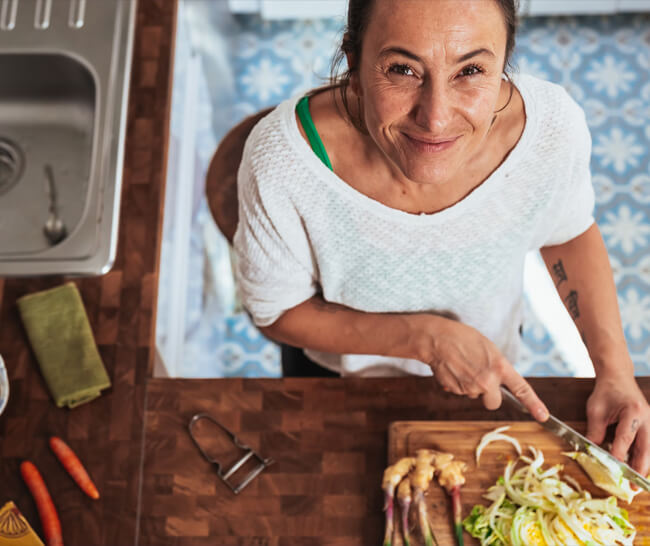If you’re trying to eat healthier and want to avoid all the artificial colors, natural flavors, and other chemicals so often found in food today, a raw food diet may be just what you’re looking for. In addition to saving time by omitting cooking, this diet is packed with nutrients that can help optimize your health. Although there are many upsides to a raw food diet, it’s not right for everyone. This article will walk you through everything you need to know about this popular plant-based diet.
{{mid-cta}}
What Is a Raw Food Diet and How Does It Work?
The raw food diet is exactly what it sounds like a diet composed of unprocessed, uncooked, plant foods. Instead of traditional cooking methods like sauteing, boiling, or roasting, a Raw Food Diet relies on techniques that do little to alter the natural state of the food. Methods like dehydrating, blending, juicing, soaking, and sprouting are commonly used. On the Raw Foods Diet, foods shouldn’t be heated over 118 degrees Fahrenheit, nor should they be canned or chemically processed in any way.
The theory behind this eating pattern is that cooking causes plant-based foods to lose important nutrients. One study found that boiling, blanching, steaming, and microwaving significantly reduced the amount of vitamin C and vitamin K in a variety of different vegetables.1 Proponents of this diet believe that focusing on raw and unprocessed (or minimally processed) foods allows you to maximize your intake of essential vitamins and minerals. Additionally, plant-based diets are typically lower in calories than other diets and have been shown to support weight loss, reduce BMI, and improve insulin sensitivity.2
Raw Food Diet Types

Raw food diets don’t have to be one-size-fits-all. This eating pattern can be adapted based on your lifestyle and preferences. Here are some different types of raw foods diets:
Raw Omnivorous Diet
This version of the Raw Foods Diet is the most flexible. It permits animal foods like unpasteurized dairy products, raw meat, or raw fish in addition to plant foods.
Raw Vegetarian Diet
Similar to other vegetarian diets, this diet allows for eggs and dairy as long as they are raw and unpasteurized.
Raw Vegan Diet
This is the most strict type of raw diet and excludes any and all animal products.
<p class="pro-tip"><strong>Also Read: </strong><a href="can-you-eat-raw-salmon">Can You Eat Raw Salmon? A Guide on How to Do It Safely</a>.</p>
Benefits and Risks of Uncooked Foods
The standard American diet is high in calories, saturated fat, sodium, and sugar yet low in healthy nutrients like fiber. This type of diet is associated with the growing rate of chronic conditions like obesity, cardiovascular disease, type 2 diabetes, and cancer.3
In fact, one study found that poor dietary habits may be the cause of one in every five deaths worldwide.4 The raw food diet, on the other hand, seems to be the opposite of the typical American diet, as it’s rich in fiber and powerful antioxidants, which help support optimal health. Below are some of the many benefits to eating a diet rich in fresh colorful plant foods:
Pros
- High vitamins, minerals, and phytonutrients
- Rich in fiber which supports optimal cholesterol levels
- Promotes a diverse and robust gut microbiome5
- May increase gut bacteria Bifidobacterium and Lactobacillus, which have anti-inflammatory effects in the body5
- Helps prevent and manage type 2 diabetes6
- Supports weight loss
- Can lower blood pressure7
Cons
There is no one single perfect diet, and a raw foods diet is no exception. Here are some of the drawbacks of following this type of diet:
- Highly restrictive and difficult to adhere to long term
- Hard to eat out at restaurants, and may impact social life
- Challenging to get adequate protein, vitamin B12, calcium, and iron from plant foods alone and may require supplements
- May require expensive appliances like a dehydrator, juicer, and food processor
- Eating raw eggs, meat, and dairy (as permitted in the Omnivorous raw food diet) is strongly advised against by the USDA due to the risk of contamination with harmful bacteria8
- Cooking actually increases the bioavailability of some nutrients. Lycopene, a phytonutrient found in tomatoes, is associated with lower risks of cancer and cardiovascular disease. Research has shown that cooking tomatoes actually increases the lycopene content, making cooked tomatoes healthier than their raw counterparts9
- Excess fiber can cause digestive problems, especially for those with a history of gut-related issues like irritable bowel syndrome (IBS)
Raw Food Diet: Foods to Eat and What to Avoid

A raw foods diet may sound bland, but it can be just as fun and fresh as it is nutrient dense. By limiting your options to only unprocessed plant foods, you’ll push yourself to try new fruits and vegetables and test out new preparations of your old favorites.
Stocking your fridge and pantry to follow a raw foods diet is easy. Here are some examples of what to add to your shopping list:
Fruits
Traditional raw fruits like apples, oranges, and bananas are great, but also opt for some more exotic fresh fruits like starfruit, passionfruit, and papayas.
Vegetables
Veggies like zucchini, carrots, and beets offer a ton of versatility when it comes to raw food recipes. Make sure to get a variety of mushrooms (like oyster, portobello, shitake, and button) too!
Whole Grains and Legumes
Rolled oats, buckwheat, quinoa, beans, and lentils are pantry staples.
Nuts and Seeds
Both nuts and needs offer countless options for sweet and savory dishes. Try walnuts and pecans for their healthy monounsaturated fats or pumpkin and chia seeds for their rich fiber content.
Condiments
Try tamari sauce, balsamic vinegar, cold-pressed extra virgin olive oil, or miso.
Sweeteners
If you’ve got a sweet tooth, the raw foods diet can still work for you. Dried fruits, raw honey, coconut palm sugar, or liquid stevia.
With vegan and vegetarian raw food diets, a big concern is getting enough calcium and protein, so focusing on foods that provide these essential nutrients is vital. Below are some of the best foods to focus on:
- Calcium
<ol class="ol-type-a_second-level"><li>Seeds (poppy, sesame)</li><li>Nuts (almonds, Brazil nuts)</li><li>Green leafy veggies (collard greens, kale)</li><li>Sea vegetables (nori, wakame)</li><li>Vegetables (broccoli, cabbage)</li><li>Fruit (figs, apricots)</li></ol>
- Protein
<ol class="ol-type-a_second-level"><li>Nuts (almonds, pistachios, cashews)</li><li>Legumes (beans, peas, lentils)</li></ol>
Worried about what to avoid? It’s simple! Stay away from foods that are heated over 118°F or have been refined, pasteurized, or processed.
Is a Raw Diet Healthier?
There are many impressive health benefits associated with following a raw foods diet. Eating a largely plant-based diet increases your intake of fiber and phytonutrients, which may help lower cholesterol, reduce blood pressure, optimize blood sugar, and reduce your overall risk of chronic diseases. By following a raw foods diet, you’ll avoid packaged and processed foods, and you will naturally cut back on calories allowing you to more easily lose weight.
That being said, long-term health is about consistency, and the best diet is one you can stick with. The raw foods diet is arguably the most restrictive diet out there (it’s harder to follow than even the keto diet), so the chances of someone adhering to it, in the long run, are slim to none.
Additionally, there are health risks involved with eating only raw foods. Cooking foods at adequate temperatures kills harmful bacteria and viruses, reducing the chances of contracting a foodborne illness or food poisoning. Furthermore, the nutrient content of certain foods (like tomatoes) actually goes up after cooking.
When it comes to finding the right diet, balance and moderation are key. It’s helpful to incorporate more raw and cooked plant-based foods into your routine, but you don’t have to go to extreme lengths to reap the benefits.
Learn More About How to Improve Blood Sugar Health With Signos’ Expert Advice
Signos incorporates cutting-edge research and the proven power of continuous glucose monitoring to help you lose weight and reach your health goals. Not sure if Signos is right for you? Take this quiz to find out! Interested in learning more about nutrition and healthy eating habits? Check out more articles on our blog.
<p class="pro-tip"><strong>Learn More:</strong><a href="mediterranean-diet-for-beginners">Mediterranean Diet Beginners Guide: Benefits, Meal Plan & Tips</a>.</p>
- Item 1
- Item 2
- item 3
Topics discussed in this article:
References
- Lee S, Choi Y, Jeong HS, Lee J, Sung J. Effect of different cooking methods on the content of vitamins and true retention in selected vegetables. Food Sci Biotechnol. 2017 Dec 12;27(2):333-342. doi: 10.1007/s10068-017-0281-1. PMID: 30263756; PMCID: PMC6049644.
- Clem J, Barthel B. A Look at Plant-Based Diets. Mo Med. 2021 May-Jun;118(3):233-238. PMID: 34149083; PMCID: PMC8210981.
- Institute of Medicine (US) Committee on Examination of Front-of-Package Nutrition Rating Systems and Symbols; Wartella EA, Lichtenstein AH, Boon CS, editors. Front-of-Package Nutrition Rating Systems and Symbols: Phase I Report. Washington (DC): National Academies Press (US); 2010. 4, Overview of Health and Diet in America. Available from: https://www.ncbi.nlm.nih.gov/books/NBK209844/
- https://www.thelancet.com/journals/lancet/article/PIIS0140-6736(19)30041-8/fulltext
- Tomova A, Bukovsky I, Rembert E, Yonas W, Alwarith J, Barnard ND, Kahleova H. The Effects of Vegetarian and Vegan Diets on Gut Microbiota. Front Nutr. 2019 Apr 17;6:47. doi: 10.3389/fnut.2019.00047. PMID: 31058160; PMCID: PMC6478664.
- Reynolds AN, Akerman AP, Mann J. Dietary fibre and whole grains in diabetes management: Systematic review and meta-analyses. PLoS Med. 2020 Mar 6;17(3):e1003053. doi: 10.1371/journal.pmed.1003053. PMID: 32142510; PMCID: PMC7059907
- Chan, Q., Stamler, J., Brown, I. et al. Relation of raw and cooked vegetable consumption to blood pressure: the INTERMAP Study. J Hum Hypertens 28, 353–359 (2014). https://doi.org/10.1038/jhh.2013.115
- https://www.fsis.usda.gov/food-safety/safe-food-handling-and-preparation
- https://www.sciencedaily.com/releases/2002/04/020422073341.htm
































